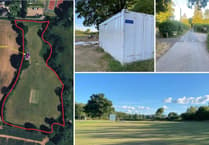The block on building across much of Herefordshire has already cost the county £316 million in “lost” investment.
This is the finding of a study by property services firm Lichfields on the impact of several “moratoriums” arising from guidance to councils in June 2019 on permitting developments in water-sensitive areas.
The study, commissioned by the building industry’s Nitrate and Phosphates Strategy Group (NPSG), found that in Herefordshire this equated to 2,500 new houses, including 1,000 likely to be classed as affordable, being “on hold”.
Consequences of this include 5,200 direct construction jobs not created, as well as a further 6,300 in the construction supply chain, £28 million forgone in new residents’ spending in local shops and services, and a further 350 jobs lost in these sectors as a result.
Herefordshire Council would also have benefited from £5 million more each year in council tax payments, and £54 million in planning contributions towards infrastructure from developers had their projects gone ahead, the report says.
Chris Winter, chair of NPSG and founder of Somerset housebuilder Cherwyn Developments, said the nutrient neutrality guidance “is having an unprecedented impact on the local economy and is compounding the effects of the housing crisis, is unsustainable, and is not reflecting Herefordshire’s needs”.
“We are ready to work with the Government to implement alternative solutions that will protect the environment while unlocking housing delivery,” he said.
Merry Albright, chair of the Herefordshire Construction Industry Lobby Group which is also working to find ways round the moratorium in the county, said the Lichfield figures “sound right”.
“But my instinct is that the number of jobs impacted or not created is a lot more than 5,200, and I worry that this stagnation and loss of opportunity could last for many years to come,” she said.
The lost income to the council is also “a big worry, as this is cash generated by new housing development that should go directly to communities and to increasing and enhancing infrastructure locally”, she added.
Herefordshire Council ruled in July 2019 that to protect the river Lugg special area of conservation (SAC), it would only permit developments that could demonstrate “nutrient neutrality” across the Lugg, Frome or Arrow catchments, covering most of the north of the county.
It is currently putting in the first of a programme of “integrated” wetlands around sewage treatment plants, which it says will unlock building work by allowing developers to buy credits in these to compensate for any new phosphate pollution.
At the end of last month, the council’s cabinet backed moves to prepare the credit trading scheme, though not to actually begin selling the credits.
Ms Albright said the credits system is “not a solution to river pollution – because housing is not the cause – or the end of the moratorium, which we will likely be stuck in for a while yet”.




